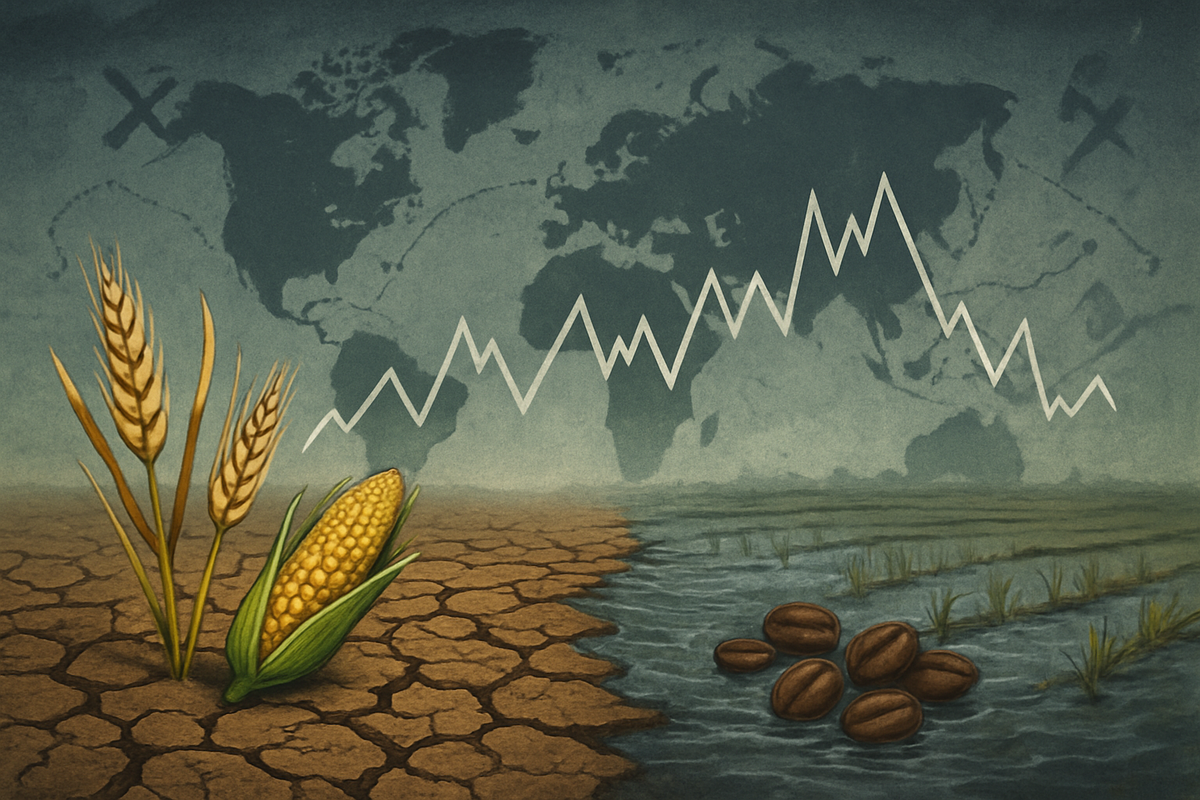Why Farmers Are Shielding Their Crops With Solar Panels – Forbes

Report on Agrivoltaics and its Contribution to Sustainable Development Goals
Introduction: A Synergistic Approach to Land Use
Agrivoltaics, the integration of agricultural production with solar photovoltaic technology, represents a significant innovation in sustainable land management. This dual-use system addresses the critical challenge of land-use competition between food production and energy generation. By co-locating these activities, agrivoltaics provides a pathway to simultaneously advance global food security and clean energy targets, directly aligning with the United Nations’ Sustainable Development Goals (SDGs).
Alignment with Key Sustainable Development Goals (SDGs)
SDG 2 (Zero Hunger) and SDG 12 (Responsible Production)
Agrivoltaics directly contributes to achieving Zero Hunger by enhancing agricultural productivity and resilience. The microclimate created by solar panels offers significant benefits to crop cultivation.
- Increased Crop Yields: The partial shade from panels protects many crops from excess solar radiation, leading to improved yields for produce such as broccoli, lettuce, potatoes, and tomatoes.
- Resource Conservation: The shaded environment reduces water evaporation, leading to significant water conservation and improved soil health by preventing erosion. This promotes sustainable agricultural practices under SDG 12.
- Climate Resilience: Panels shield crops from inclement weather like hail, providing stability for food production in the face of climate change.
SDG 7 (Affordable and Clean Energy) and SDG 13 (Climate Action)
The primary function of the photovoltaic component is the generation of renewable energy, which is fundamental to achieving SDG 7 and SDG 13.
- Clean Energy Generation: Agrivoltaic systems produce clean electricity on-site, reducing reliance on fossil fuels and decentralizing energy infrastructure.
- Greenhouse Gas Reduction: Environmental life cycle analyses indicate that integrated agrivoltaic farms emit 69% less carbon and require 83% less fossil energy compared to separate agricultural and solar farm operations.
- On-Farm Energy Solutions: The generated electricity can power farm operations, charge electric vehicles, or be used for producing renewable fuels and fertilizers, further reducing the carbon footprint of agriculture.
SDG 8 (Decent Work and Economic Growth) and SDG 9 (Industry, Innovation, and Infrastructure)
This innovative technology provides substantial economic advantages, fostering rural development and economic stability.
- Diversified Farmer Revenue: Agrivoltaics creates a new, stable income stream for farmers through the sale of electricity, providing a financial buffer against crop failures and market volatility.
- Economic Stability: Increased profitability per acre enhances the economic viability of farming operations, supporting rural livelihoods and employment.
- Technological Innovation: The widespread adoption of agrivoltaics drives innovation in both the agricultural and renewable energy sectors, contributing to sustainable infrastructure.
SDG 15 (Life on Land)
Agrivoltaics has demonstrated positive impacts on terrestrial ecosystems.
- Combating Desertification: In regions like China, agrivoltaics is being used to rehabilitate degraded land and reverse desertification by creating favorable microclimates for plant growth.
- Biodiversity Enhancement: Studies show that these systems can help boost local biodiversity by providing shelter and varied habitats for flora and fauna.
Global Adoption and Systemic Benefits
International Implementation and Public Support
The adoption of agrivoltaics is expanding globally, with significant projects and supportive legal frameworks emerging in North America, Europe, and Asia. Public perception is overwhelmingly positive; a survey in the U.S. revealed that 82% of residents in rural areas are more likely to support solar development when it is integrated with farming, citing benefits to local jobs and farmer income.
Comprehensive Services of Agrivoltaic Systems
Agrivoltaic systems can provide a multitude of interconnected services that advance sustainability:
- Renewable electricity generation
- Decreased greenhouse gas emissions
- Climate change mitigation
- Increased crop yield
- Plant protection from excess solar energy
- Plant protection from inclement weather
- Water conservation
- Support for agricultural employment
- Promotion of local food systems
- Improved public health from pollution reduction
- Increased and diversified revenue for farmers
- A hedge against inflation
- Potential for on-farm production of nitrogen fertilizer
- On-farm production of renewable fuels
Conclusion
Agrivoltaics is a highly effective, economically viable technology that addresses multiple sustainability challenges simultaneously. By optimizing land use for both food and energy production, it provides a powerful tool for achieving the Sustainable Development Goals related to hunger, clean energy, climate action, economic growth, and terrestrial ecosystem health. Its growing global adoption, driven by strong economic and environmental benefits, positions it as a key strategy for a sustainable future.
Analysis of Sustainable Development Goals in the Article
1. Which SDGs are addressed or connected to the issues highlighted in the article?
The article on agrivoltaics, the dual use of land for agriculture and solar energy generation, connects to several Sustainable Development Goals (SDGs). The analysis identifies the following relevant SDGs:
- SDG 2: Zero Hunger: The practice directly aims to improve food production by increasing crop yields and making farming more resilient.
- SDG 6: Clean Water and Sanitation: Agrivoltaics contributes to water conservation, a key aspect of sustainable water management.
- SDG 7: Affordable and Clean Energy: A core component of agrivoltaics is the generation of clean, renewable solar energy, reducing reliance on fossil fuels.
- SDG 8: Decent Work and Economic Growth: The article highlights the economic benefits for farmers, which supports rural livelihoods and economic growth.
- SDG 13: Climate Action: By generating clean energy and reducing emissions, agrivoltaics is a direct measure to combat climate change and its impacts.
- SDG 15: Life on Land: The article discusses the positive impacts of agrivoltaics on land, including combating desertification and boosting biodiversity.
2. What specific targets under those SDGs can be identified based on the article’s content?
Based on the benefits of agrivoltaics described in the article, several specific SDG targets can be identified:
- Target 2.3: Double the agricultural productivity and incomes of small-scale food producers. The article states that agrivoltaics leads to “increased crop yield” and “increased revenue for farmers,” directly aligning with this target.
- Target 2.4: Ensure sustainable food production systems and implement resilient agricultural practices. Agrivoltaics is presented as a resilient practice that protects plants from “excess sun, wind, hail and soil erosion” and creates a stable microclimate.
- Target 6.4: Substantially increase water-use efficiency. The article mentions that the microclimate under the solar panels “helps conserve water.”
- Target 7.2: Increase substantially the share of renewable energy in the global energy mix. The entire concept is based on “renewable electricity generation” from solar panels, contributing directly to this target.
- Target 8.4: Improve global resource efficiency in consumption and production. Agrivoltaics improves the efficiency of land use by producing both food and energy on the same plot of land.
- Target 13.1: Strengthen resilience and adaptive capacity to climate-related hazards. The article notes that solar panels provide “plant protection from inclement weather such as hail,” which is a climate-related hazard.
- Target 15.3: Combat desertification, restore degraded land and soil. A specific example from the article states that “in China, agrivoltaics is literally being used to erase deserts.”
- Target 15.5: Halt the loss of biodiversity. The article explicitly mentions that environmental studies show agrivoltaics can “boost biodiversity.”
3. Are there any indicators mentioned or implied in the article that can be used to measure progress towards the identified targets?
The article mentions or implies several quantitative and qualitative indicators that can be used to measure progress:
- Increase in crop yields: The article mentions yield increases for specific crops like “broccoli, celery, corn, grapes, kale, lettuce, pasture grass, peppers, potatoes, strawberries, tomatoes and more.” This is a direct indicator for SDG Target 2.3.
- Increase in farmer revenue: The text highlights “improved farm economics” and “increased revenue for farmers” as key drivers for adoption, serving as an indicator for SDG Target 2.3.
- Share of renewable energy: The amount of electricity generated by the solar panels is a direct measure of the contribution to renewable energy, relevant to SDG Target 7.2.
- Reduction in greenhouse gas emissions: The article provides a specific metric from a life cycle analysis, stating that agrivoltaic farms “emit 69 % less carbon” compared to separate systems. This is a key indicator for SDG 13.
- Reduction in fossil fuel dependency: A related indicator is the finding that these farms “demand 83 less fossil energy,” measuring progress towards climate action and clean energy goals.
- Area of land restored: The example of using agrivoltaics to “erase deserts” in China implies that the area of reclaimed or restored land can be used as an indicator for SDG Target 15.3.
- Public support levels: The article cites a survey showing “82% of Americans would be more likely to support solar development in their community if it integrated farming,” which can be an indicator of social acceptance and policy support.
4. Summary Table of SDGs, Targets, and Indicators
| SDGs | Targets | Indicators |
|---|---|---|
| SDG 2: Zero Hunger | 2.3: Double agricultural productivity and incomes of small-scale food producers. | – Increase in crop yields (e.g., for broccoli, tomatoes). – Increase in farmer revenue and economic stability. |
| SDG 6: Clean Water and Sanitation | 6.4: Substantially increase water-use efficiency. | – Evidence of water conservation due to the microclimate under panels. |
| SDG 7: Affordable and Clean Energy | 7.2: Increase substantially the share of renewable energy in the global energy mix. | – Amount of renewable electricity generated from solar panels. |
| SDG 8: Decent Work and Economic Growth | 8.4: Improve global resource efficiency in consumption and production. | – Increased land-use efficiency (food and energy from the same area). |
| SDG 13: Climate Action | 13.1: Strengthen resilience to climate-related hazards. | – 69% reduction in carbon emissions. – 83% reduction in fossil energy demand. – Protection of crops from extreme weather (hail, excess sun). |
| SDG 15: Life on Land | 15.3: Combat desertification, restore degraded land. 15.5: Halt biodiversity loss. |
– Area of desert land reclaimed (as in the China example). – Measured increase in biodiversity on agrivoltaic farms. |
Source: forbes.com
What is Your Reaction?
 Like
0
Like
0
 Dislike
0
Dislike
0
 Love
0
Love
0
 Funny
0
Funny
0
 Angry
0
Angry
0
 Sad
0
Sad
0
 Wow
0
Wow
0

















































:focal(1500,1000)/https://media.globalcitizen.org/a6/9a/a69a4720-d8a1-4715-b596-18738d03c05c/rotary_polio_hero_image.jpg?#)






/countries/sri-lanka/photo-credit---dmc-sri-lanka.tmb-1200v.jpg?sfvrsn=dc298bcc_1#)


















